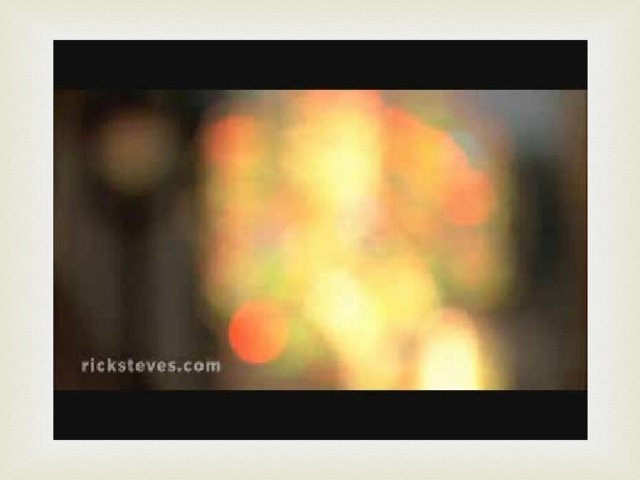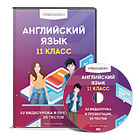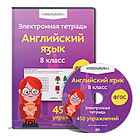Christmas.
If you try to catch a train on the 24th of December you may have difficulty in finding a seat. This is the day when many people are travelling home to be with their families on Christmas Day, the 25th of December. For mast British families, this is the most important festival of the year it combines the Christian celebration of the birth of Christ with the traditional festivities of winter.
Later in the afternoon they may watch the Queen on television as she delivers her traditional Christmas message to the Unites Kingdom and the Commonwealth. If they have room for even more food they may enjoy a piece of Christmas cake or eat a hot mince pie. The 26th of December is also a public holiday. Boxing Day, and this is the time to visit friends and relatives or watch football.
Boxing Day.
In Great Britain and Canada, Boxing Day is usually celebrated on the 26th of December. The holiday may have originated in the custom of giving Christmas boxes to policemen, lamplighters and servants. On that day, the alms boxes that had been placed in churches over the festive period were opened and their contents distributed. Today it is customary to recognize the work of postal workers and newspaper deliveres with bonuses.
Also known as St. Stephen’s Day, Boxing Day celebrates 2 saints of that name. Since St. Stephen is the patron saint of horses, these animals were traditionally fed bread, salt, or corn and blessed in church by an English priest on that day.
Children.
New toys flying reindeer, elves, twinkling light and candy canes – these magical symbols of Christmas are especially associated with children. When the stockings are hung and the dollhouses are assembled, it’s for the children. And when the star-shaped sugar cookies and popcorn garlands mysteriously disappear, we all suspect the children.
These days, Christmas wouldn’t be Christmas without the produced-for-children-but-loved-by-all television classics “Rudolph the Red-Nosed Reindeer”, “A Charlie Brown Christmas” and “How the Grinch Stole Christmas”.
Finally, it is the children who add sparkle to the most routine of holiday events, from the proud little tykes leading the Christmas parade to the nervous ones at the mall, waiting to sit on Santa’s knee.
Parties, Christmas.
From the perfunctory office event to the traditional family garthering, Christmas is the time for parties. At many holiday parties, gifts are exchanged.
Most party-givers tend to stick with the traditional ones described above, but anything is possible. Consider a breakfast or branch party: they are ideal when so many schedules are already occupied with evening events, and set the state for a different kind of menu. Tree-trimming parties, when guests are invited to bring one ornament to hang on a tree, are always fun and unusual. A twist on this idea is to have guests prepare a special tree for birds and squirrels of the neighbourhood.
Wreath.
The most popular of all door decorations, the wreath has become a gesture of holiday welcome. The outdoor wreath is a recent innovation, but circles of fresh evergreens have been used to decorate homes since Victorian times.
The Advent wreath is a circle of fir decorated with four candles, each of which is lit on one of the 4 Sundays before Christmas. Wreaths may be made entirely of pinecones or fashioned from dried flowers and herbs the way they were made in England during the Middle Ages. A simple wreath may be made of mixed greens and decorated with cones, bayberry and red berries; more elaborate types might be decorated with shellacked fruits.
Yule log.
The custom of burning a Yule log comes from the Norse and Anglo-Saxons, who burned a huge oak log once a year to honour Thor, the god of Thunder. When the northen tribes accepted Christmas, or Juul, as it was known in Northern Europe. Selecting and burning the Yule log then became symbolic of Christ as Light of the World, and many different nationalities came to accept this custom as their own with variations in their rules.
Bells.
Although they are not exclusively symbolic of Christmas, bells have always been closely associated with religious services. For example, Jewish high priests wore gold bells on the borders of their robes, and Emperor Augustus of Rome had a bell hung before the Temple of Jupiter. It is believed that Christmas first used bells on churches about the year A. D. 400, but by medieval days, the ringing of bells had become closely associated with Christmas.
St. Nicholas carried a hand bell on his visits, too, and in Clement C. Moore’s poem, “A visit from St. Nicholas”, Santa Claus’s sleigh had bells.
Carols.
The world carol comes from a French round dance called a carol. It was also the name of an English pagan song-dance performed to celebrate the winter solstice.
Christmas.
That one word brings to mind so many images: food, carols, family and, of course, present! Whether you look forward to snuggling by the fire on Christmas Eve, gathering in the kitchen to take cookies, or sharing traditions that have been in your family for generations, Christmas enriches our lives in countless ways.
Christmas. Энциклопедия.
Christmas, in the Christian church, annual festival, held on December 25, to celebrate the Nativity, on birth of Christ. The origin of the festival is unknown. Scholars believe that it is derived in part from rites held by pre-Christian Germanic and Celtic peoples to celebrate the winter solstice. Christians since the 4th centure, incorporate pagan customs, such as the use of holly, mistletoe, Yule logs and wassail bowls. The Christmas tree, an evergreen trimmed with lights and other decorations, is derived from the so-called paradise tree, symbolizing Eden, of German mystery plays.
“Bah, Humbug”.
Early in Charles Dickens’ story “A Christmas Carol” Ebenezer Scrooge is visited by his nephew, red, who bids him a Merry Christmas. “Bah!” said Scrooge, “Humbug!” And the rest is history. Because ever since Dickens published his classic in 1843, Scrooge’s ill-willed oath has been the most oft-repeated line from the story, even appearing on commercial T-shirts and coffee mugs. Usually, though, “Bah, humbug!” is used in jest, since Scrooges’s transformation from crabby old miser to sentimental do-gooder is widely appreciated by audiences around the world.
In Charles Dickens’ classic “A Christmas Carol”, Ebenezer Scrooge is visited by 3 ghosts. The mission of the third ghost is to show Scrooge scenes from dismal future.
Advent.
The term advent comes from the Latin word adventus, which means “a coming”. The Advent season includes the first 4 Sundays before Christmas and reminds Christians of the coming Jesus. Many Christians, particularly those in Germany and other European countries, observe Advent with fasting and player. The first Sunday of the season is known as Advent Sunday.
The wreaths and calendars used to celebrate this religious holiday are, in fact, German customs. For each of the 4 Sundays, a red candle is added to an Advent wreath made of fir, holly or laurel.
Calendars.
Advent calendars typically show a Christmas scene incorporating little doors or windows that are opened, one at a time, on each of the 25 days preceding December 25.
The largest door is opened on Christmas Day and often shows a picture of Jesus, Mary and Joseph. Some Advent calendars consist of big star and 24 little stars, designed to be removed daily until only the large star remains on Christmas Eve. There are also Advent calendar candles, numbered on one side, which are burned down one number each day from December, the first until Christmas. They are usually lit during a family meal.
“The Birth of Jesus”.
Ангел: “Greetings, yoi who are higly favoured! The Lord is with you.”
Автор: Mary was greatly troubled at his words and wondered what kind of greeting this might be. But the angel said to her,
Ангел: “do not afraid, Mary, you have found favour with God. You will be with child and give birth to a son, and you are to give him the name Jesus. He will be great and will be called the Son of the Most High. The Lord God will give him the throne of his father David and he will reign over the house of Jacob forever, his kingdom will never end.”
Мэри: “How will this be, since I am a virgin?”
Ангел: “The Holy Spirit will come upon you and the power of the Most High will overshadow you. So the holy one to be born will be called the Son of God.”
Мэри: “I am the Lord’s servant. May it be to me as you have said.”
Colors.
Red and green are the traditional colors of Christmas. The holly plant, with its green leaves and red berries, is thought to be the inspiration, but otherwise, there does not seem to be any historical or legendary reason for the association of red and green with Christmas. Dark blue, white, silver and gold have inexplicably become recognized as secondary color choices for the season.
Cards.
Each year people exchange more than 2 billion Christmas cardsc with friends, family members and businedd acquaintances. Yet this annual tradition of conveying good cheer via a printed greeting and connecting with acquaintance old, new, distant or nearby is a relatively young one. Since the latter half of the 1800ts the number of greeting-card companies producing Christmas cards has expanded from a single firm to about 850 publishers.

 Получите свидетельство
Получите свидетельство Вход
Вход










































 Открытое внеклассное мероприятие по английскому языку по теме "Рождество". (20.67 MB)
Открытое внеклассное мероприятие по английскому языку по теме "Рождество". (20.67 MB)
 0
0 904
904 166
166 Нравится
0
Нравится
0


